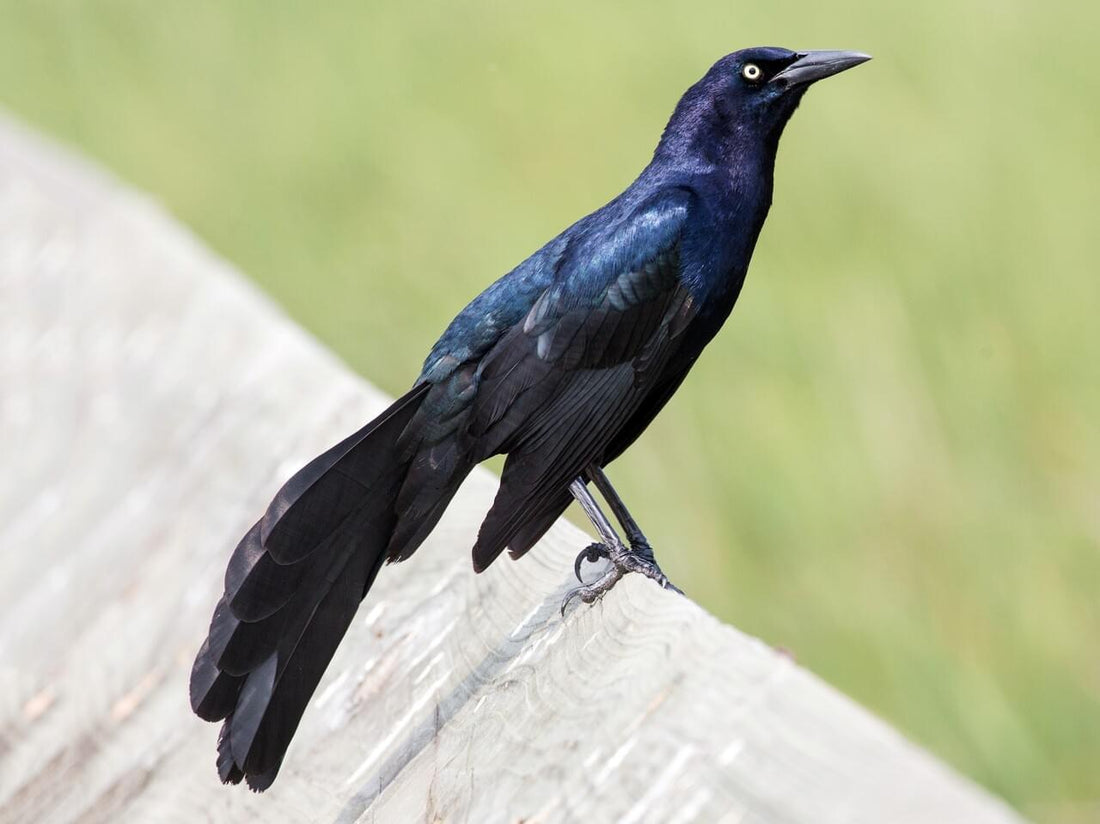
Great-tailed Grackle
The Great-tailed Grackle is a beautiful iridescent bird, with adult males whose feathers can look black to blue, purple or green in the sunlight. They are similar looking to Common Grackles and Boat-tailed Grackles and can be distinguished from these species by their long V-shaped tail and yellow eyes. Females are a duller brown in color.

Photo courtesy of Cameron Eckert and All About Birds
Great-tailed Grackles are mainly found year-round in the Western United States. Birds on the northern edge of the range may migrate south for the winter. Their habitat consists of both agricultural and urban settings with open foraging settings and can be found in many areas that we inhabit.

Range map courtesy of All About Birds
Great-tailed Grackles eat everything from seeds and insects to small mammals, reptiles and amphibians. In the summer and early fall months, small animals make up to 80% of their diet.
During the breeding seasons males will be seen displaying for available females. They will run toward the females with their wing feathers and tails out around the female, whistling and chattering. They can also be seen defending their territory and threatening rival males by ruffling their feathers, spreading out their tails and pointing their bills up while shrieking.

Photo courtesy of Sam Hough and All About Birds
They build cup shaped nests typically in trees or marsh vegetation made of grass, plants, strips of bark and even strips of plastic, ribbons, and feathers. They lay between and eggs per brood and can have up to two broods a year. Their eggs are white with brown splotches and swirls.

Photo courtesy of Birds of the World
Great-tailed Grackles communicate with many different sounds from shrie forking whistles, to rattles and rat-a-tat like sounds.
Video courtesy of Bear River Blogger on You Tube
I have been lucky to see these birds in Texas when we went down there in 2019 for vacation. They were abundant outside our hotel, and I was able to see their territorial displays also. Below is a picture I was able to snap while they were displaying.

I hope you enjoyed learning a little more about the Great-tailed Grackle!
